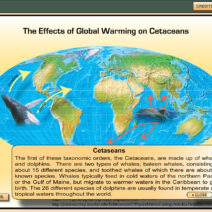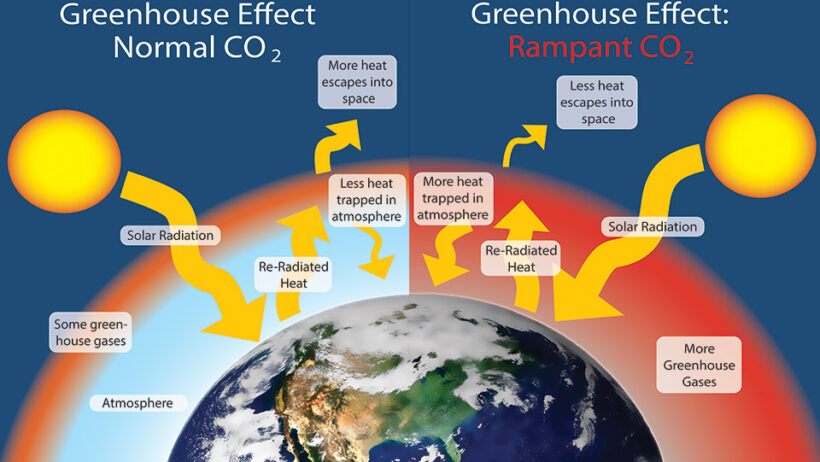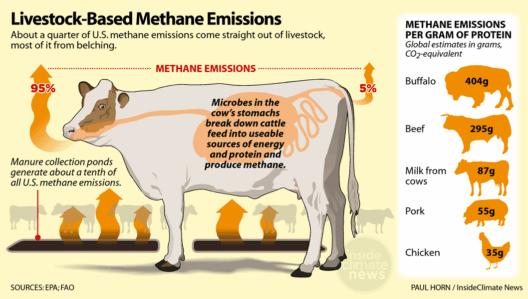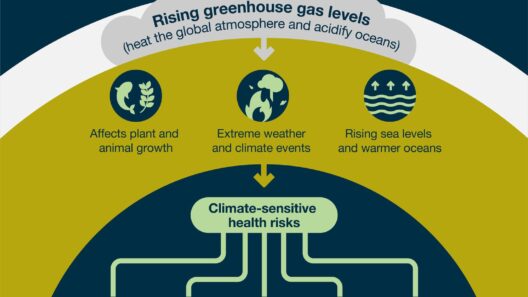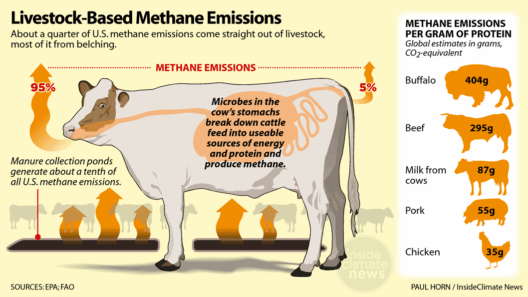The concept of greenhouse gases is akin to a delicate, yet insidious web that envelops the Earth, ensnaring heat and altering the climate in profound ways. These gases, primarily carbon dioxide (CO2), methane (CH4), and nitrous oxide (N2O), function like a finely tuned orchestra. Each plays its instrument in harmonious, yet disconcerting, synchronization, contributing to a symphony of warming that echoes through our ecosystems.
To understand the role of greenhouse gases in climate warming, we must first delve into the atmospheric layers that cradle our planet. The Earth is bathed in solar energy, receiving light and warmth from the sun. A portion of this energy is absorbed by the land, the oceans, and the myriad surfaces of our planet, while the remaining energy radiates back into space. The greenhouse gases, however, act as a formidable barrier, trapping some of this outgoing energy and effectively preventing it from escaping—a process essential for life but also the very mechanism paving the way for climate change.
Historically, the Earth has enjoyed a balance, a state of thermal equilibrium that has allowed life to flourish. However, anthropogenic activities—the relentless extraction of fossil fuels, deforestation, and industrial agriculture—have exacerbated the concentration of greenhouse gases in the atmosphere. According to the latest reports, the levels of CO2 are higher now than they have been for at least 800,000 years, dramatically tilting the scales of this delicate balance.
At the heart of this phenomenon lies the greenhouse effect. Visualize a greenhouse: a haven designed to cultivate plants, where sunlight filters in freely but struggles to exit. The glass panels trap heat, creating a warm environment conducive to growth. Similarly, greenhouse gases allow sunlight to enter the Earth’s atmosphere but inhibit the escape of heat, leading to an increase in global temperatures. This metaphor extends beyond horticulture, reflecting the way our climate system has been affected by human actions.
Moreover, consider the individual contributions of each greenhouse gas. Carbon dioxide, the most prevalent, is released predominantly from burning fossil fuels like coal, oil, and natural gas. Its persistence in the atmosphere is remarkable; it can linger for centuries, continuously influencing climate. Methane, on the other hand, possesses a potency that belies its comparatively lower concentration. While it is present in smaller quantities, it is approximately 25 times more effective than CO2 over a 100-year period in trapping heat within our atmosphere. Sources of methane include livestock, landfills, and the production and transport of fossil fuels. Lastly, nitrous oxide, though less well-known, emerges from agricultural practices, often resulting from nitrogen fertilizers, and possesses a greenhouse warming potential 298 times that of CO2 over the same timeframe.
As the concentration of these gases continues to rise, so too do the consequences. The increase in global temperatures brings forth a cascade of climatic aberrations: more intense heatwaves, erratic precipitation patterns, rising sea levels, and more severe storms. Each of these impacts interplays with human and ecological systems, often exacerbating existing inequalities and challenging our capacity to adapt. For example, communities with limited resources may find themselves particularly vulnerable to extreme weather events, while ecosystems struggle to cope with rapid changes in their environment.
The interconnectedness of these factors illustrates the complexity of climate change and invites us to contemplate the intricate dance between greenhouse gases and global warming. As we grapple with the implications of this entangled narrative, the urgent need for mitigation becomes apparent. Transitioning to renewable energy sources, enhancing energy efficiency, adopting sustainable agricultural practices, and mastering the art of carbon sequestration are critical steps toward alleviating the gravitational pull of greenhouse gases.
But it is not merely a technical challenge; it is also a moral one. The urgency to combat climate change compels us to act with conviction and purpose. Grassroots movements, technological innovations, and policy advocacy are potent tools in our arsenals against the rising tide of greenhouse gases. By fostering awareness and engaging communities, we can weave a stronger narrative—one that highlights the importance of our collective action against climate change. Each individual effort—no matter how small—contributes to a larger tapestry of resilience.
In conclusion, the science behind greenhouse gases and climate warming reveals an alarming yet actionable reality. It illustrates that while these gases may serve as a buffer against extreme cold, their unchecked emission leads to an inhospitable planet—one characterized by devastating heat, unpredictable systems, and diminished biodiversity. Understanding this intricate web of interdependence is pivotal for driving change. The future rests not only in scientific discovery but also in our shared commitment to fostering a sustainable world. Each of us possesses the latitude to impact this unfolding narrative; it is up to us to ensure it is one of hope and resilience, rather than despair.
